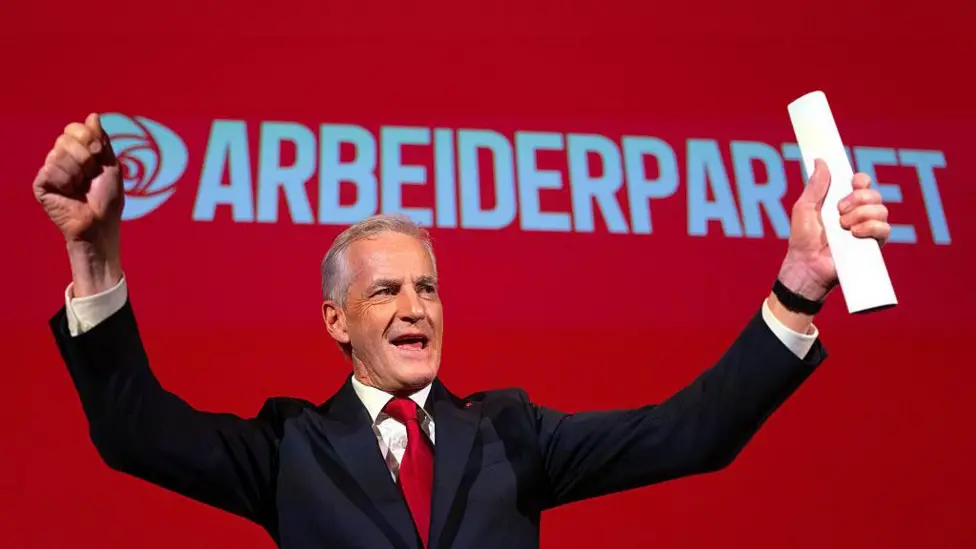By Peter Egge Langsæther (University of Oslo)
In the wake of the 2021 elections, the Labour Party, alongside the rural-agrarian Centre Party, formed a minority government, relying on the Socialist Left for parliamentary support. However, this government quickly fell out of favour, with both parties experiencing plummeting poll numbers that plunged Labour to historically low levels with support below 20%. This decline can be attributed to a number of factors, including surging inflation and interest rates, compounded by spiralling electricity prices following Russia’s full-scale invasion of Ukraine. Consequently, public dissatisfaction mounted, particularly regarding the impact of electricity cables facilitating high prices from the continent. Simultaneously, the government alienated various constituencies. Labour’s tax policies faced criticism from the business and industrial sectors, while their attempts to appeal to rural voters alienated urban constituents, leading to a sharp decline in support in major cities. The Centre Party, for its part, failed to bolster its popularity in rural areas, unable to effectively counteract ongoing centralisation and deliver on some of their ambitious promises. In contrast, the mainstream right, represented by the Conservatives, enjoyed a surge in support among discontent voters, peaking at over 30% in late 2022 and early 2023.
However, Conservative fortunes waned soon after. In the autumn of 2023, party leader and former Prime Minister Erna Solberg found herself embroiled in a scandal regarding undisclosed stock trading activities linked to her husband and his dealings in companies influenced by her policy decisions. Support for her party began to erode then and continued to slide as the populist right Progress Party gained momentum on pressing economic issues and tax policies. Over the ensuing two years, the Conservatives further declined, while the Progress Party charted unprecedented growth, challenging the Conservatives’ long-held status as the largest right-wing party. Uncharacteristically, the Progress Party thrived not on immigration issues, which typically fuel its growth, but by capitalising on economic concerns, particularly garnering support from young men drawn to economic growth and business policies. It appeared that the stage was set for a fresh right-wing government.
The lead-up to the 2025 elections, however, proved tumultuous. In a remarkable turnaround, Labour recovered around ten percentage points in just a few short months—an extraordinary feat in Norwegian politics, particularly in non-crisis periods (though similar shifts have occurred during exceptional events like the COVID-19 pandemic). Several factors account for this development. The reinstatement of Donald Trump as President of the United States generated considerable uncertainty regarding economic and foreign policies, sparking concern among Norwegians, particularly given his pointed remarks about Denmark. Coupled with ongoing conflicts in Ukraine and Gaza, this atmosphere of international insecurity favoured Labour and Prime Minister Jonas Gahr Støre, who is widely regarded as competent in such matters. The return of the highly respected Jens Stoltenberg, former Prime Minister and current NATO Secretary-General, further reinforced the perception of a robust Labour leadership capable of navigating turbulent times. Recent polls indicated that Labour commands the highest levels of public trust among Norwegian parties on these issues. At the same time, the Centre Party chose to leave the unpopular government over disagreements concerning EU relations and electricity policies. This strategic move provided Labour with something of a fresh start, restoring support in urban areas. Furthermore, Labour’s introduction of an opt-in, fixed price for electricity effectively neutralised this contentious issue from the political discourse. Thus, while Stoltenberg’s return was undoubtedly important, its significance may have been overstated in international media; it was the combination of these factors that led to Labour’s sharp rise.
In many respects, the essential determinants of the election outcome were thus established prior to the campaign, which turned out to be relatively uneventful and narrowly defined. Discussion predominantly centred on positions, coalition-building, and electoral thresholds. Unsurprisingly, perhaps, as the ascendance of the Progress Party generated uncertainty surrounding potential prime ministerial candidates if the right achieved a majority. This uncertainty proved contentious among moderate Conservative and Liberal voters, many of whom were opposed to a Progress Party PM, likely resulting in defections towards Labour and the Greens. Ultimately, the Conservatives suffered one of their worst results in history, securing a mere 14.6% of the vote, while the Progress Party celebrated its greatest electoral triumph at 23.9%, emerging as the second-largest party and resoundingly the leading right-wing force.
Additionally, the election’s outcome hinged on which smaller parties surpassed the electoral threshold. The Greens, positioning themselves as potential kingmakers on the left, heavily emphasised this aspect in their campaign, successfully surging from around 3% in the polls to a final result of 4.7%, thereby crossing the electoral threshold for the first time.
To the extent that issues were debated, the campaign was preoccupied with economic matters—diverging markedly from preceding elections which had been dominated by climate and immigration discussions. This shift was perhaps inevitable, given the backdrop of rising inflation and electricity costs. However, the debate was sharply focused on the issue of the wealth tax, which affects only 14% of the population. This narrow approach may have exacerbated challenges for the right-wing bloc.
The final outcome was a narrow win for the left, with Labour as the largest party reliant on several radical left, green, and agrarian parties. Labour is set to continue its minority government, but with an even more fragmented support base than previously. All four small support parties are now kingmakers, and Labour’s former coalition partner, the Centre Party, has already threatened that they should not be taken for granted. Norwegian politics is set to be intriguing and tumultuous in the years ahead.
Note: This article was written in the early hours following the election, with 99% of the votes counted. There may therefore be minor adjustments to some of the numbers presented.
Photo source: https://www.bbc.co.uk/news/articles/cq65255l27qo


